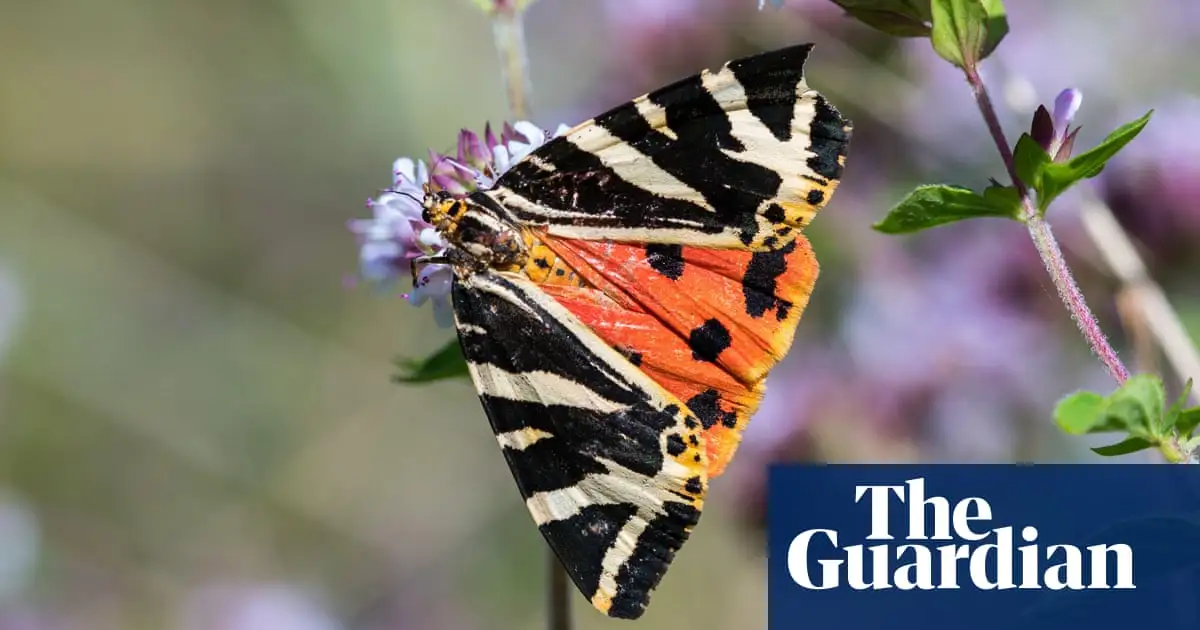The Jersey tiger, Euplagia quadripunctaria, is one of the more spectacular British moths. Rather than trying to blend in with its surroundings, its dramatic black and white wings, with additional orange flashes when flying, seem to be saying “eat me if you dare” and get a stomachache. Most potential predators appear to heed the warning.
Unlike some other moths, the caterpillars eat a variety of roadside weeds including nettles, and those hatched in September shelter through the winter on rough patches of ground with plenty of food plants.
The farthest north this species used to be seen was Jersey (as the name suggests) but global heating has transformed its fortunes.
This is the best summary I could come up with:
The Jersey tiger, Euplagia quadripunctaria, is one of the more spectacular British moths.
Rather than trying to blend in with its surroundings, its dramatic black and white wings, with additional orange flashes when flying, seem to be saying “eat me if you dare” and get a stomachache.
Unlike some other moths, the caterpillars eat a variety of roadside weeds including nettles, and those hatched in September shelter through the winter on rough patches of ground with plenty of food plants.
The farthest north this species used to be seen was Jersey (as the name suggests) but global heating has transformed its fortunes.
The speed of this advance can be gauged by the fact that Butterfly Conservation still classes it as nationally scarce and report its colonisation only of counties to the south of London.
It is the warmer winters allowing these caterpillars to survive that is thought to be aiding the species’ spread.
The original article contains 208 words, the summary contains 153 words. Saved 26%. I’m a bot and I’m open source!



